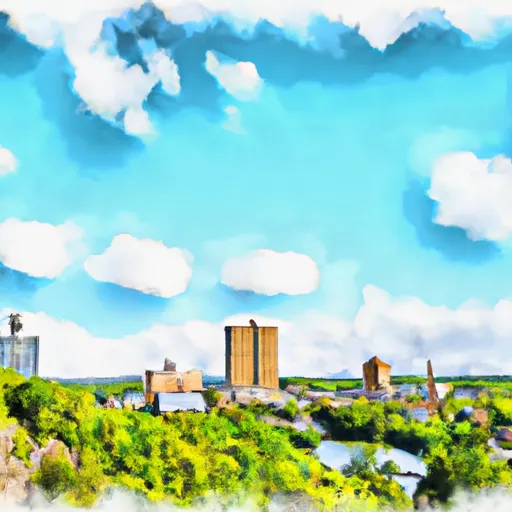°F
°F
mph
Windspeed
%
Humidity











Jim Falls, Wisconsin is a small village located in Chippewa County, with a population of just over 700 residents. The climate in Jim Falls is characterized by warm summers and cold winters, typical of the Midwest region. Average summer temperatures range from the mid-70s to low 80s Fahrenheit, while winters can be quite chilly with temperatures dropping to the single digits or even below zero.
The village is named after the stunning Jim Falls, a prominent natural attraction in the area. The picturesque Jim Falls is formed by the confluence of the Chippewa and Fisher rivers, creating a breathtaking cascade. The hydrology constituents in this region include these two rivers, which offer opportunities for fishing, boating, and kayaking.
In addition to the enchanting waterfalls, Jim Falls also provides numerous outdoor recreation opportunities. The area is surrounded by lush forests and countryside, offering opportunities for hiking, camping, and wildlife viewing. Nearby Lake Wissota provides further outdoor activities such as swimming, water skiing, and picnicking.
Overall, Jim Falls, Wisconsin offers a charming rural setting with its beautiful waterfalls, abundant outdoor activities, and a climate that allows for diverse recreational opportunities throughout the year.
Weather Forecast
Jim-Falls receives approximately 811mm of rain per year, with humidity levels near 84% and air temperatures averaging around 7°C. Jim-Falls has a plant hardyness factor of 4, meaning plants and agriculture in this region thrive during a short period during spring and early summer. Most plants will die off during the colder winter months.
Regional Streamflow Levels
2,670
Cubic Feet Per Second
153
Cubic Feet Per Second
10
Cubic Feet Per Second
586
Cubic Feet Per Second
Nearby Camping
| Camping Area | Reservations | Toilets | Showers |
|---|---|---|---|
| Onondaga Cave State Park | |||
| Meramec State Park | |||
| Roberts Field | |||
| Hermann City RV Park | |||
| Greer Crossing | |||
| Powder Mill - Ozark National Scenic River |



